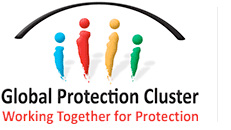AGE, GENDER, DIVERSITY
The Age, Gender and Diversity Approach
All human populations are made up of individuals, each of whom possesses a unique profile and capacities. In humanitarian response, it is important to take these differences into account, not only because they may give rise to specific protection risks, but also because they can often be leveraged to improve the situation of those affected.
Through the systematic application of an Age, Gender and Diversity (AGD) approach, humanitarian actors seek to ensure that all individuals in affected communities have access to their rights on an equal footing. Applying an AGD approach is not an add on: it is a core element of fair and equal protection. By analysing the AGD dimensions as interlinked personal characteristics, we are able to better understand the multifaceted protection risks and capacities of individuals and communities, and to address and support these more effectively. By promoting respect for differences as an enriching element of any community, we promote progress toward a situation of full equality. Equality means respect for all. It includes the promotion of equal opportunities for people with different needs and abilities and direct, measurable actions to combat inequality and discrimination.
The Age, Gender and Diversity elements can be defined as follows:
AGE refers to the different stages in one’s life cycle. It is important for protection programming to be aware of where people are in their life cycle as their capacities and needs change over time. Age influences, and can enhance or diminish, a person’s capacity to exercise his or her rights. The protection risks affect an individual differently depending on age.
GENDER refers to the socially constructed roles for women, girls, men, and boys. Gender roles are learned, changeable over time, and variable within and between cultures. Gender often defines the duties, responsibilities, constraints, opportunities and privileges of women, girls, men, and boys in any context. Gender equality refers to the equal enjoyment of their rights, responsibilities and opportunities and it implies that the interests, needs and priorities of each gender are respected.
DIVERSITY refers to different values, attitudes, cultural perspectives, beliefs, ethnic background, nationality, sexual orientation, gender identity, ability, health, social status, skill, and other specific personal characteristics. While the age and gender dimensions are present in everyone, other characteristics vary from person to person. These differences must be recognized, understood and valued by humanitarian actors in each emergency to ensure protection for all affected people.
DISABILITY People with disabilities include women, men, girls, and boys with long-term physical, mental, intellectual, or sensory impairments which, in interaction with various barriers, may hinder their full and effective participation in society on an equal basis with others.
Key barriers to inclusion of Gender, Age, and disability in humanitarian action:
Barriers to inclusion of gender, age and disability could be:
- Attitudinal Barriers: Negative attitudes and discrimination on one hand, or over-protection on the other hand, can be caused by a misconception of disability or older age. For example, people in the community might believe that a woman, older person, or a person with disabilities cannot participate in the response due to preexisting biases or misconceptions regarding their capacity. Parents might hide a child with disabilities at home because they think that disability is a source of shame. Factors such as disability, age and gender are not isolated: the intersection between them can create multiple forms of discrimination.
- Environmental Barriers: Barriers include physical barriers to accessing the built environment, and barriers to information and communication. For example, if only one format is used to provide information on humanitarian services, instead of different formats, such as tactile signing, sign language, audio, or images, this could be a barrier. Information barriers may be less visible than physical barriers, but it is important to detect them, as they can exclude large groups of people.
- Institutional Barriers: Laws, policies, and procedures (including those of humanitarian organizations) can lead to either intended or unintended discrimination against certain groups. These barriers may segregate older people and persons with disabilities from many aspects of community life, such as employment, political participation, education and/or social services.
